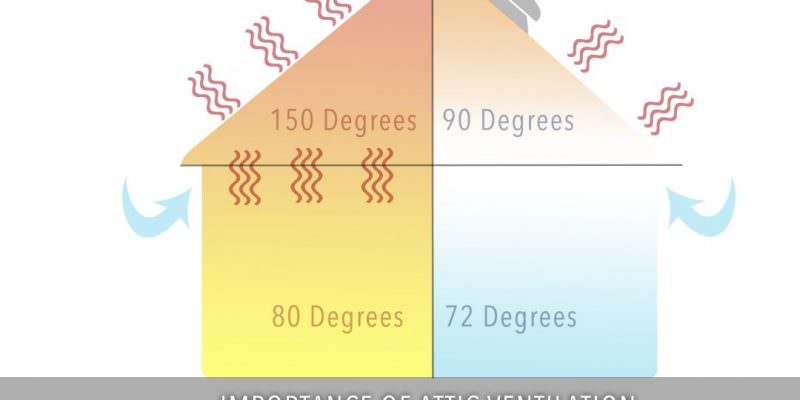To ventilate or not to ventilate? That certainly is the question amongst researchers.
Attic ventilation is a heavily debated topic. In the last several decades, building codes have demanded increased attic insulation yet there are still skeptics who say the benefits are overrated. The lack of agreement lies mostly in the fact that climates vary immensely, making it hard to find a solution that fits all areas.
What we do know is that in Florida’s extreme climate, the heat trapped in an unventilated attic may lead to temperatures above 150 degrees Fahrenheit. This heat could:
- Radiate into your living area, which will reduce energy efficiency and make the living situation very uncomfortable.
- Prematurely age your roof and cause damages to your sheathing and other roofing materials.
- Cause a build up of moisture, which would lead to rot, mildew, and mold.
In addition to protecting your roof and increasing energy efficiency, proper ventilation will eliminate mold and mildew, saving you from major health problems down the road.
So what are your options?
Turbine Vents- A turbine vent will spin with the breeze. As soon as it starts to spin, it vacuums air out of your attic. The faster it spins, the more air it exhausts.
Ridge Vents– A ridge vent runs the entire length of the roof peak, blending into the roofline for a more attractive appearance while allowing heat and condensation to escape.
Static Roof Vents– Static roof vents are roof vents that are stationary. Because there are no moving parts, a static vent undergoes less wear and tear and can last the life of a roof.
Intake Vents- Intake vents provide continuous intake airflow at the roof’s edge and provide proper intake ventilation for homes with little or no overhang.
Standard Power Vents– Power-assisted roof vents work even in still air and ensure vigorous ventilation. It should be noted however that these do run off electricity, so the energy savings may not outweigh the energy costs.
Solar Power Vents- Solar-powered roof vents have zero operating costs. Some are eligible for tax incentives and utility rebates. However, some complain that solar-powered roof vents may not work properly when it’s cloudy, and that these types of vents don’t pull enough air.
Gable Vents- Gable vents are usually installed on the exterior wall of your attic in order to create proper air circulation during extreme climate conditions.
Soffit Vents- Soffit vents are intake vents installed in the eaves to draw in cool air from the outside. Soffit vents are never installed without other types of vents installed at a higher location to draw air and moisture out of the attic.
Whichever ventilation method you chose it is important to have balance between the intake and exhaust in order to create a consistent flow of cool, dry air through your attic. To help ensure the air flows smoothly and efficiently, the amount of intake should always match or exceed the amount of exhaust.
A properly installed ventilation system from Gulf Western Roofing can extend the life of your roof. Save energy, save money, protect your house, and protect the health of your family today with proper rooftop ventilation.











